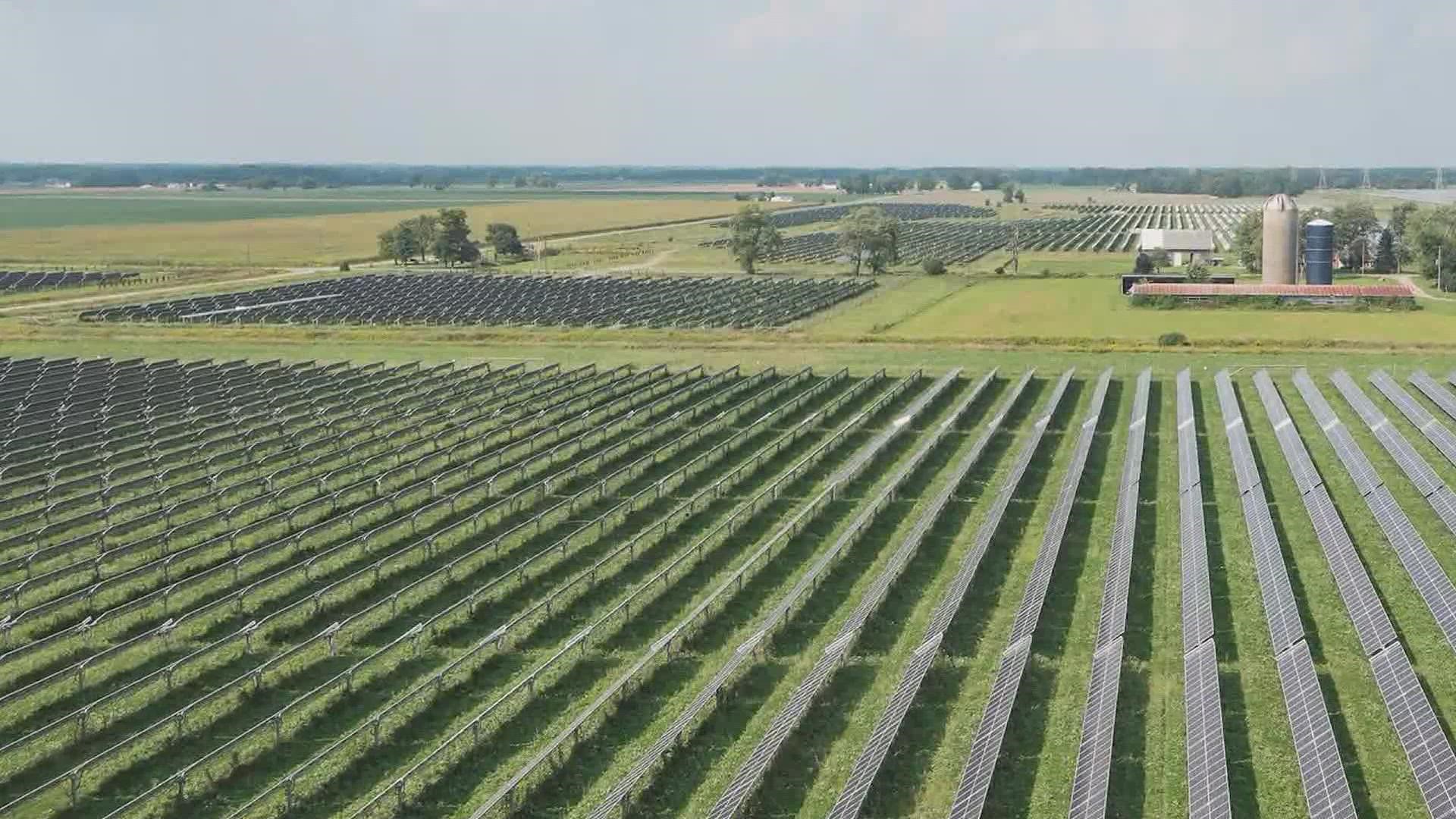GRAND MOUND, Iowa — A solar energy development company is in the process of gathering permits to build a multi-million dollar solar farm in Clinton County near Grand Mound.
Ranger Power has developed several solar projects across the Midwest including in Southern Illinois and Michigan. The company is now working on the Hawkeye Solar Project in Iowa, and is leasing 1,500 acres of private farmland for the hundreds of thousands of solar panels.
The $250 million project comes at no cost to the landowners, the county or the state, according to Development Manager Sam O'Keefe. The solar panels would generate enough energy to power 50,000 homes and businesses in Eastern Iowa.
"We can bring all the benefits of renewable energy here also," O'Keefe said. "Whether it's from an environmental perspective, or an economic argument, it's one of the cheapest forms of electricity that's being produced today."
The Hawkeye Solar Project is also expected to reduce carbon dioxide emissions by hundreds of thousands of metric tons annually, the equivalent to taking nearly 100,000 cars off the road.
The panels' positions will rotate with the sun, but at full height, the panels are "no taller than full-grown corn," O'Keefe said.
"It's vegetated underneath with prairie grasses, deep rooted grasses and pollinator species," he said.
One of the reasons they're interested in Grand Mound, he said, is because of its existing infrastructure.
"It's a different kind of business model than solar panels that are on your roof for personal use," O'Keefe said. "This goes on to the high voltage grid. The reason why we can build a project here is because of the high voltage transmission lines and substations that already exist, and so basically, we install the solar panels, plug into the grid, and then it's just like any other generator of electricity."
The project has been in the works for around two years, and landowner participation is voluntary.
Dennis Campbell is a sixth-generation farmer in Grand Mound and is leasing 40 acres of his land for the panels to be built on.
"We're not going to stop farming because we've had a small parcel of land put into solar production," Campbell said.
It's a technology he's already familiar with. He has solar panels on all the buildings on his farm, so "it's a very natural progression," he said.
"We use that to dry our crops and transport our crops," Campbell said. "We understand that and it's worked well for us for the seven years that we've put it in."
Additionally, he sees it as an extension of what he does as a farmer.
"We take sunshine, and we turn it into calories, right?" Campbell said. "We convert that through photosynthesis process, into corn and soybeans, carbohydrates, and proteins and oils. And so with a solar panel, we're really taking that same square foot, and we're taking that sunshine and we're turning it into energy, potential energy that we can send out and we can use that elsewhere."
Construction on the Hawkeye Solar Project is expected to generate more than 200 new jobs.
The current proposal is for a 40-year land lease. Over those 40 years, the project would generate $12 million in tax revenue. Half of that would go to the Central Dewitt and Calamus-Wheatland Community School Districts. Another 40% would go to Clinton County for roads, infrastructure and public services, and 10% would go to local townships, area colleges, agricultural extension, assessor and the state.
That was one of the reasons Campbell decided to lease part of his farmland.
"I think out here in rural Iowa, we need to really look at how we can generate additional tax revenue here," he said. "It's gonna affect everybody, we're gonna have better roads, we're gonna better schools, we're gonna have better communities. And hopefully we can continue to keep people to stay and work out here in the rural environment."
One of the concerns residents have with the project is its potential effects on neighboring property value. According to O'Keefe, there is no negative impact.
"The panels are not toxic in any way or hazardous to human health," O'Keefe said. "They're not making noise, producing emissions. It's clean, renewable electricity."
They also do not deplete natural resources or cause environmental damage through resource extraction and transportation, and they do not use significant amounts of water during operations, according to the company.
"From my perspective, if not here, it'll happen somewhere else. And so if we aren't careful and we continue to just use the term 'NIMBY,' not in my backyard, and continue to repeat that time and time again, other opportunities to come down the road in the future, they might start to avoid this area," Campbell said. "That's not what we want to do if we want to continue to bring people back to rural Iowa and have them in these communities."
At the end of the project's lifetime, the current 40-year lease, O'Keefe said there is a plan and funds set aside to decommission the solar panels.
"At the end of the project, it's just a matter of disassembling these simple modular parts," he said. "And then the landowner still owns the land, they can do with it what they want. They can restore it and start farming again."
Ranger Power is currently in the permitting process of the Hawkeye Solar Project. O'Keefe said they're optimistic about it and hope to begin construction on the solar panels in a year. Construction could take anywhere from 12 to 18 months, so the solar panels would likely be operational sometime in 2024.

